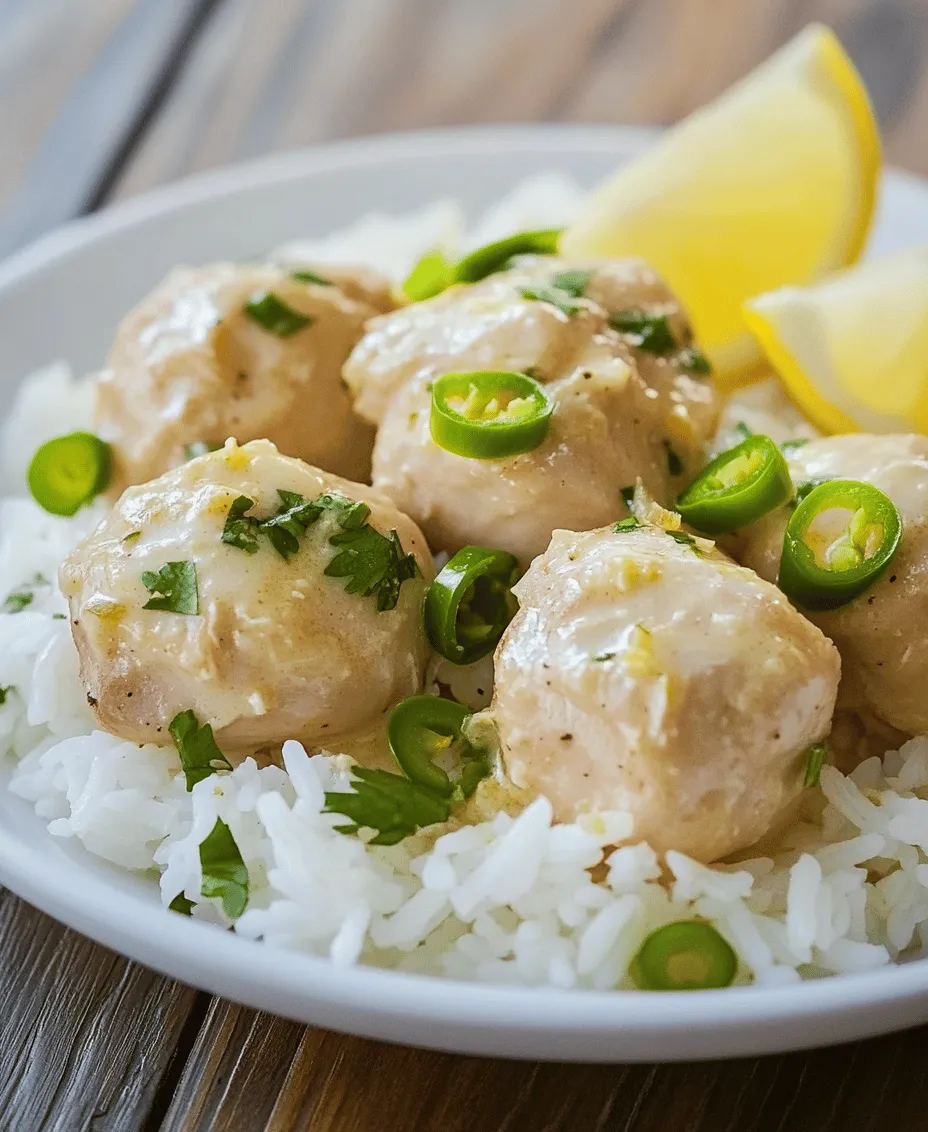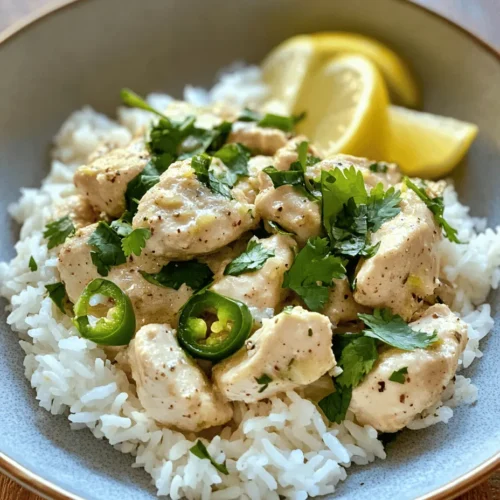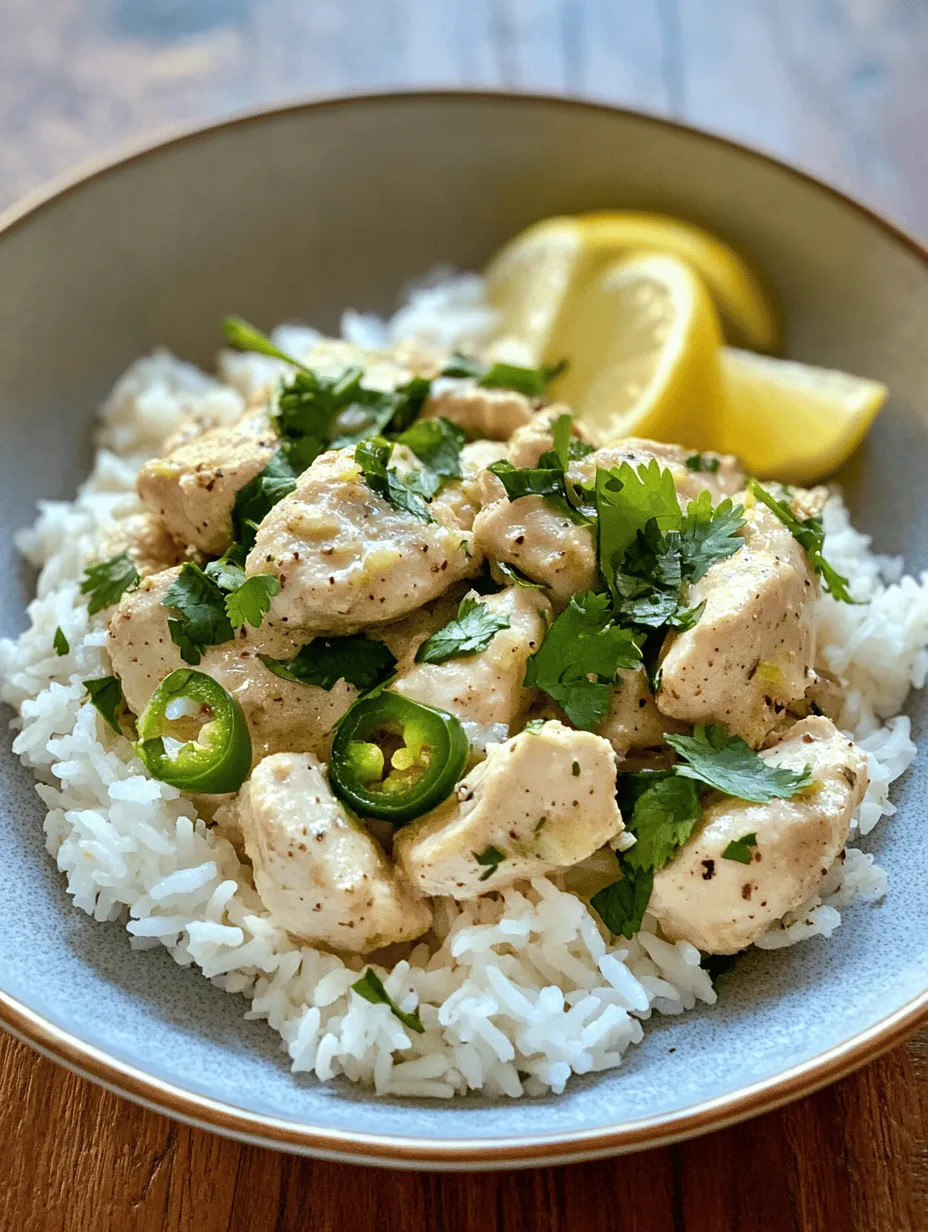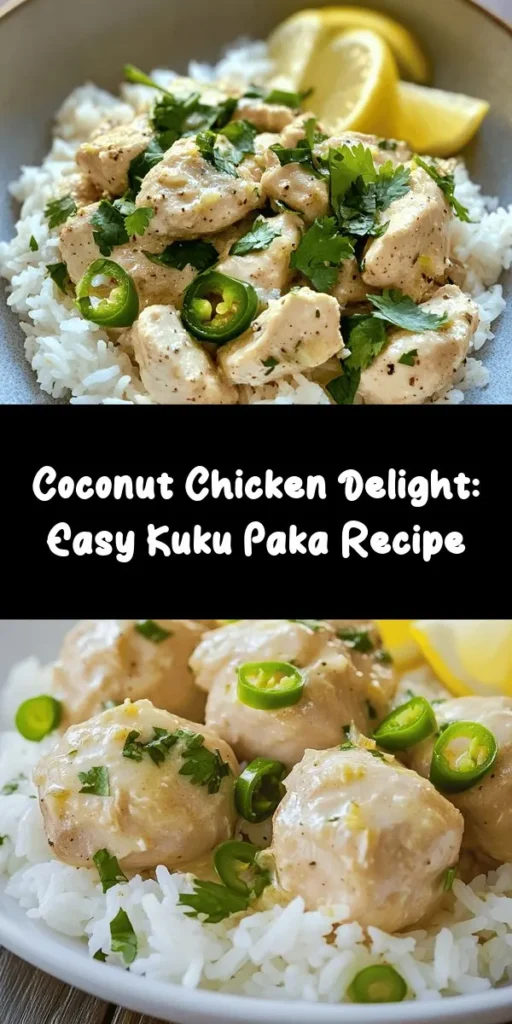Introduction
Kuku Paka is a delightful and aromatic dish that hails from the coastal regions of East Africa, particularly popular in countries like Kenya and Tanzania. This traditional recipe combines succulent chicken pieces with a rich coconut milk sauce, creating a harmonious blend of flavors that reflects the region’s diverse culinary heritage. The use of coconut milk not only gives Kuku Paka its creamy texture but also infuses it with a subtle sweetness that complements the spices beautifully. As you delve into the world of Kuku Paka, you’ll discover a unique fusion of African and Indian culinary traditions that tell a story of cultural exchange and adaptation.
This dish is more than just a meal; it encapsulates the essence of East African cuisine, where the warmth of spices meets the tropical richness of coconut. Whether you are looking to impress guests at a dinner party or simply want to explore new flavors in your kitchen, Kuku Paka offers an inviting culinary journey that promises to satisfy your taste buds. Join us as we explore the intricate flavors and cultural significance of this beloved dish, and learn how to bring the taste of East Africa to your own dining table.
Understanding Kuku Paka
Historical Context of Kuku Paka in East African Cuisine
Kuku Paka has its roots steeped in the culinary traditions of East Africa’s coastal communities, where the ocean serves as both a source of sustenance and cultural exchange. The dish is believed to have been influenced by the diverse populations that have inhabited the coastal regions over the centuries, including Swahili, Arab, Indian, and Portuguese settlers. This blend of cultures has resulted in a rich tapestry of flavors and cooking techniques, making Kuku Paka a perfect representation of the region’s historical culinary evolution.
The term “Kuku” means chicken in Swahili, while “Paka” translates to “to coat” or “to cover,” referring to the method of preparing chicken in a flavorful coconut sauce. As a dish that embodies the coastal lifestyle, Kuku Paka is often enjoyed during special occasions and communal gatherings, where sharing food is a fundamental aspect of the culture. The use of coconut, a staple in many coastal diets, not only enhances the dish’s flavor profile but also signifies the importance of local ingredients in East African cooking.
The Fusion of Indian and African Culinary Influences
The culinary landscape of East Africa is characterized by a fascinating fusion of flavors, particularly from Indian cuisine, which has left a significant mark on local dishes. The introduction of spices such as cumin, coriander, and garam masala, alongside cooking techniques like marinating and sautéing, highlights the Indian influence in Kuku Paka. This blend is evident in the dish’s rich use of aromatic spices that elevate the chicken and coconut combination to new heights.
The integration of these culinary traditions is a testament to the region’s history of trade and cultural exchange. As Indian traders and immigrants settled along the East African coast, they brought their culinary practices, which melded seamlessly with the indigenous ingredients and cooking methods of the locals. This cross-cultural collaboration is what makes Kuku Paka a celebrated dish, showcasing the best of both worlds.
Significance of Coconut as a Staple Ingredient in Coastal Regions
Coconut is not just a key ingredient in Kuku Paka; it is a cornerstone of East African coastal cuisine. The tropical climate of the region is ideal for coconut cultivation, and its versatility makes it a favorite among local cooks. From coconut milk to grated coconut flesh, various parts of the coconut are used in different dishes, enhancing flavor and adding nutritional value.
In Kuku Paka, coconut milk plays a pivotal role in creating a creamy, luscious sauce that envelops the chicken, making every bite rich and satisfying. The natural sweetness of the coconut milk balances the heat from the spices, resulting in a well-rounded flavor profile. Additionally, coconut is known for its health benefits, including its high content of healthy fats, vitamins, and minerals, making it a nutritious addition to any meal.
Key Ingredients for Kuku Paka
To create an authentic and flavorful Kuku Paka, it is essential to use high-quality ingredients that contribute to the dish’s signature taste. Each component plays a significant role in building flavor and texture, from the chicken to the spices.
Chicken
The choice of chicken is crucial in Kuku Paka, as it forms the foundation of the dish. You can use either bone-in chicken pieces or boneless chicken, depending on your preference. Bone-in chicken, such as thighs or drumsticks, offers a richer flavor and juiciness due to the marrow and connective tissues that break down during cooking. This results in a more flavorful sauce as the chicken releases its juices into the coconut milk.
On the other hand, boneless chicken breast can be a quicker cooking option, appealing to those who prefer a leaner cut. Regardless of the choice, marinating the chicken is an essential step that enhances its flavor and tenderizes the meat.
Coconut Milk
Coconut milk is the star ingredient in Kuku Paka, providing a creamy texture and a subtle sweetness that complements the spices used in the dish. When selecting coconut milk, it’s best to opt for high-quality canned or freshly made coconut milk for the best results. The richness of the coconut milk not only adds depth to the sauce but also helps to balance the heat from the spices, making the dish accessible to a wide range of palates.
Spices
The blend of spices used in Kuku Paka is what gives the dish its complex and aromatic flavor profile. Key spices include:
– Cumin: Known for its warm, earthy flavor, cumin enhances the overall depth of the dish.
– Coriander: With its citrusy undertones, coriander adds brightness and freshness to the flavor.
– Turmeric: This golden spice not only contributes a warm color but also provides anti-inflammatory benefits.
– Garam Masala: A blend of ground spices, garam masala adds warmth and complexity, rounding out the dish’s flavor.
In addition to flavor, these spices offer various health benefits, making Kuku Paka not only a delicious choice but a nutritious one as well.
Fresh Ingredients
To achieve an authentic flavor in Kuku Paka, the inclusion of fresh ingredients is essential. Fresh garlic, ginger, and chilies are critical for building the dish’s aromatic base. Garlic and ginger add depth and warmth, while chilies introduce a pleasant heat that can be adjusted according to personal preference. Using fresh ingredients ensures that the flavors are vibrant and pronounced, enhancing the overall culinary experience.
Preparation Steps for Kuku Paka
Creating Kuku Paka involves a few key preparation steps that are crucial for developing its signature flavor and texture. Let’s walk through the initial stages of preparing this delicious dish.
Marinating the Chicken
Marinating the chicken is an essential step in preparing Kuku Paka as it allows the flavors to penetrate the meat, resulting in a more flavorful dish. A basic marinade typically consists of garlic, ginger, spices, and sometimes yogurt or citrus juice, which helps tenderize the chicken while infusing it with flavor.
For a traditional approach, combine minced garlic, grated ginger, and a blend of spices such as cumin, coriander, and turmeric in a bowl. Add the chicken pieces and coat them evenly with the marinade. Cover the bowl and let the chicken marinate in the refrigerator for at least 30 minutes, though longer (up to overnight) will yield even better results. If you prefer a creamier texture, consider adding plain yogurt to the marinade, which will also contribute a tangy flavor.
Building the Flavor Base
Once the chicken has marinated, the next step is to build the flavor base for Kuku Paka. Start by heating oil in a large pan or skillet over medium heat. Add finely chopped onions and sauté them until they become translucent and golden brown. This process is essential as it releases the natural sugars in the onions, creating a rich base for the sauce.
As the onions cook, introduce the aromatics—minced garlic, grated ginger, and chopped chilies. Sauté these ingredients for a few minutes until fragrant, which will enhance the overall aroma of the dish. The combination of sautéed onions and aromatics contributes significantly to the depth of flavor in Kuku Paka, setting the stage for the addition of the marinated chicken and coconut milk.
By carefully following these preparation steps, you can ensure that your Kuku Paka is bursting with authentic flavors, making it a dish that will transport your taste buds to the vibrant coasts of East Africa. In the next part of this article, we will continue with the remaining steps to complete this delectable dish, offering tips and variations to make your Kuku Paka truly unique.

Blooming the Spices
Blooming spices is a crucial technique in Indian and East African cooking that enhances the depth of flavors in a dish. When spices are heated in oil or fat, their essential oils are released, intensifying their aroma and taste. This process transforms the spices from mere seasonings into the heart of the dish, allowing them to infuse their unique characteristics into the Kuku Paka.
To bloom spices effectively, start by heating oil over medium heat in a heavy-bottomed pan. Once the oil is hot, add the whole spices, such as cumin seeds, mustard seeds, and cardamom pods. Stir them gently, watching for them to sizzle and pop. This step typically takes about 30 seconds to 1 minute. The spices should begin to release their fragrant oils without burning; if they burn, they can impart a bitter taste to the dish.
In the context of Kuku Paka, blooming the spices is particularly important as it sets the foundation for the rich, aromatic sauce that envelops the chicken. The balance of spices, combined with the creamy coconut milk, creates a harmonious blend that defines the dish. By taking the time to bloom your spices, you are elevating the overall flavor profile of Kuku Paka, ensuring that every bite is packed with depth and complexity.
Cooking the Chicken
Cooking the chicken properly is essential for achieving a tender and juicy outcome in Kuku Paka. Begin by marinating the chicken in a mixture of yogurt, turmeric, and salt for at least 30 minutes—this not only infuses flavor but also helps to tenderize the meat.
When it comes time to cook, heat your oil in the same pan used for blooming the spices. Add the marinated chicken pieces and sear them on medium-high heat until they are golden brown on all sides. This initial browning not only enhances flavor through the Maillard reaction but also helps to lock in moisture.
After browning the chicken, reduce the heat to low and pour in the coconut milk. This is where the magic happens. Cover the pan and let the chicken simmer gently. The steam created will help cook the chicken evenly while keeping it moist and tender. Simmering the chicken in coconut milk allows it to absorb the rich flavors of the spices and the creaminess of the coconut, resulting in a succulent dish that melts in your mouth.
Cooking the chicken for about 20 to 30 minutes is generally ideal, depending on the size of the pieces. Ensure that the internal temperature reaches 165°F (75°C) to guarantee it’s safely cooked through. Remember that cooking with the lid on is crucial; it retains heat and moisture, preventing the chicken from drying out.
Serving Suggestions
Kuku Paka is best served hot, and there are several delightful accompaniments that elevate this dish. A fragrant bed of rice is the ideal base, soaking up the flavorful coconut sauce and complementing the spices perfectly. Basmati rice is a popular choice, but you can also use jasmine rice or even a pilaf for added flavor.
For presentation, consider garnishing your Kuku Paka with freshly chopped cilantro and a few wedges of lemon. The bright green of the cilantro contrasts beautifully with the golden hues of the dish, while the lemon wedges add a refreshing zest that balances the richness of the coconut milk.
In terms of side dishes, pair Kuku Paka with a simple cucumber salad or a fresh tomato and onion salad. These crisp, refreshing sides provide a nice contrast to the creamy chicken. If you wish to add more variety, serve it alongside a mild vegetable curry or sautéed greens. This combination not only enhances the meal but also showcases the vibrant diversity of East African cuisine.
Nutritional Benefits of Kuku Paka
Kuku Paka is not only a delight for the taste buds but also offers several nutritional benefits due to its wholesome ingredients. Chicken is an excellent source of lean protein, which is essential for muscle growth and repair, making it a great option for those looking to maintain a balanced diet.
Coconut milk, a key ingredient in Kuku Paka, provides healthy fats that can support heart health and improve cholesterol levels when consumed in moderation. Additionally, coconut milk is rich in vitamins and minerals, including manganese, copper, and magnesium, which contribute to various bodily functions.
The spices used in Kuku Paka, such as turmeric and cumin, also have notable health benefits. Turmeric contains curcumin, known for its antioxidant and anti-inflammatory properties. Cumin is rich in antioxidants and has been linked to improved digestion and immune function. Together, these spices not only add flavor but also enhance the nutritional profile of the dish.
Cultural Significance of Kuku Paka
Kuku Paka holds a special place in East African cuisine, often featured in gatherings and celebrations. This dish embodies the rich culinary traditions of the region, reflecting the blend of cultures, flavors, and cooking techniques that characterize East African food.
In many East African communities, Kuku Paka is a staple at festive occasions, family gatherings, and communal meals. It is a dish that brings people together, showcasing the hospitality and warmth of East African culture. The vibrant flavors and aromatic spices tell a story of the region’s history, influenced by Indian, Arab, and African culinary traditions.
Kuku Paka is not just about the taste; it represents the diversity of ingredients and techniques that come together to create something unique. It serves as a reminder of the importance of food in cultural identity and community bonding, making it a dish worth celebrating and sharing.
Conclusion
The journey of making Kuku Paka is a delightful exploration of flavors, aromas, and cultural heritage. From blooming the spices to simmering the chicken in creamy coconut milk, each step contributes to the creation of a dish that is both comforting and exhilarating. The vibrant colors and enticing scents draw you in, while the first bite transports you to the heart of East Africa.
Kuku Paka is more than just a meal; it’s an experience that connects you with the rich traditions of East African cooking. As you savor this dish, you not only enjoy its deliciousness but also appreciate the stories and cultures it represents.
We encourage you to explore this flavorful recipe in your own kitchen. Gather your ingredients, invite friends or family, and share a meal that celebrates the essence of togetherness and culinary creativity. Enjoy the journey of cooking Kuku Paka and indulge in the rich heritage it brings to your table.



